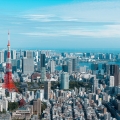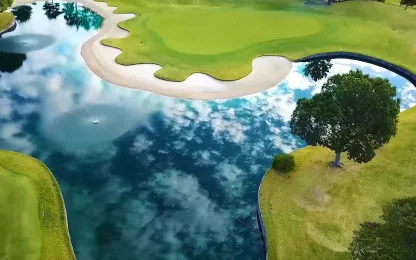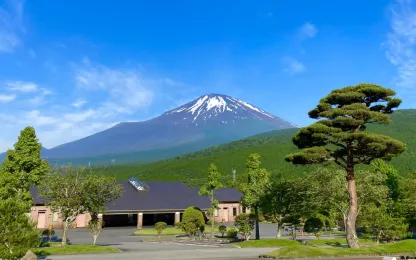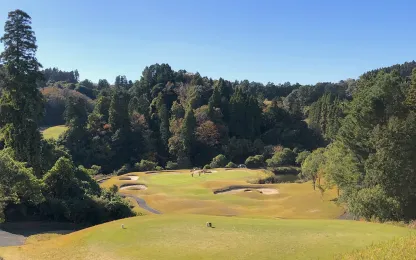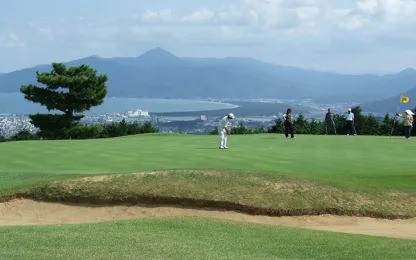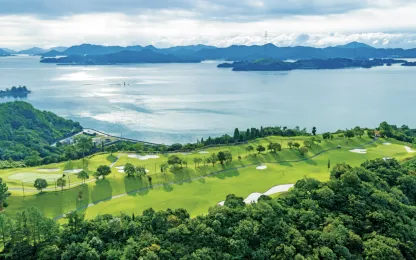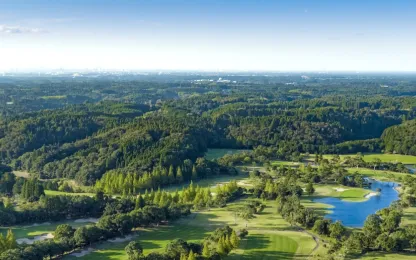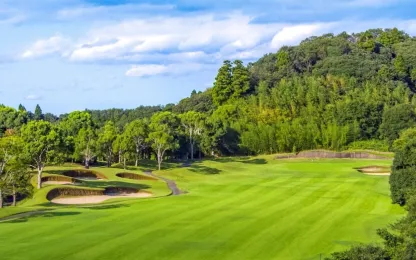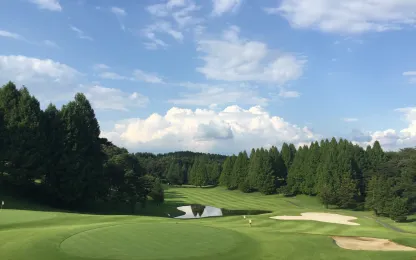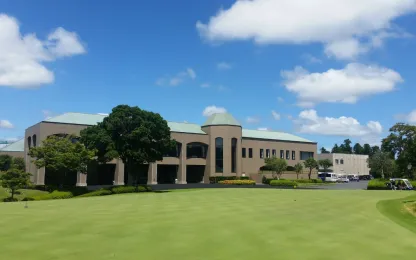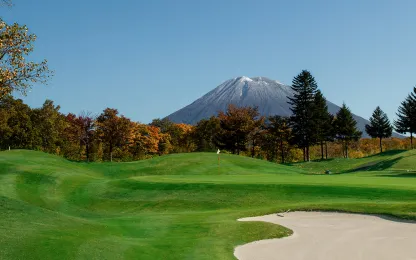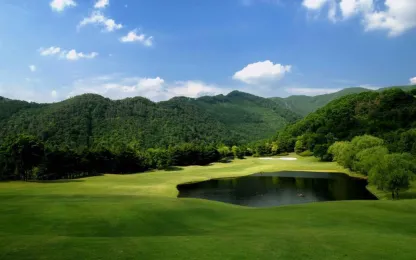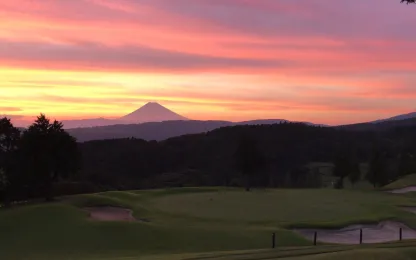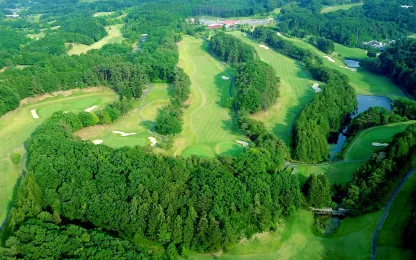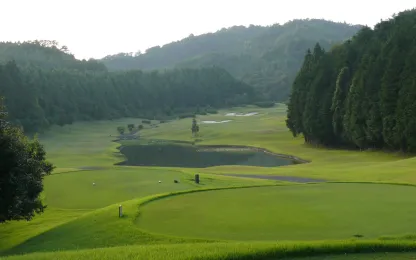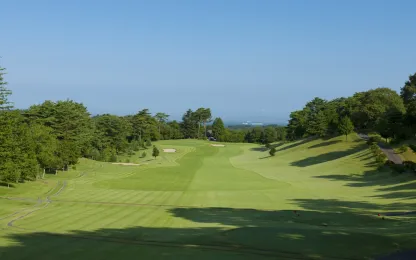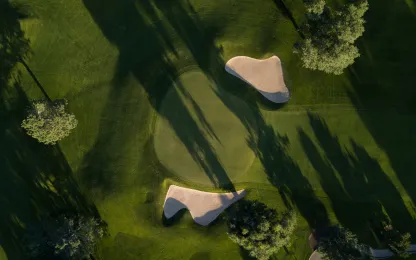A unique parkland forest course located at the foot of Mt. Fuji. The Front 9 is long and exciting and the Back 9 consists of technical holes requiring...
Latest japan travel

Kagoshima Travel Guide
Kagoshima Prefecture, located at the southern tip of Kyushu, is a region steeped in history, natural beauty, and cultural heritage. As the home of the powerful Satsuma samurai clan, Kagoshima played a crucial role in Japan’s modernization and was one of the first prefectures to engage in foreign
Ehime Travel Guide
Located in Japan’s smallest island of Shikoku, Ehime Prefecture is a land rich in history that is often overlooked by foreign visitors to the island nation. Shikoku is one of these islands full of mystery and wonder. From the 88 temples that see thousands of Buddhist pilgrims traverse the entirety of the island by foot, to the historical tradition of fishing in the area, Shikoku is enchanting, enigmatic, and yet still easily accessible. The island is connected to Japan’s main island of Honshu by the nation’s largest cluster of bridges and tunnels, including the Akashi Kaikyo bridge, which until very recently was the longest in the world.
Although traditionally an island of fishermen, Shikoku has played a vital role in Japanese history. The ancestors of today's fishermen once served as de facto sailors, defending Japan’s precious Inland Sea from pirates and Mongolian invaders.
Ehime Prefecture forms the north-western part of the island that makes up Japan’s Inland Sea, the birthplace of Japanese culture. Thus, the vital fishermen of ancient Iyo had the grand task of guarding the western inlet of the Inland Sea—an essential role in preserving Japan’s insular cultural development.
Due to its natural beauty and geography, hundreds of temples and shrines dot the island, of which Ehime Prefecture has 27 of the famed 88 temple pilgrimage routes, the most out of the four prefectures on the island. Ehime is also home to Shikoku’s largest city, Matsuyama, boasting a metropolitan area of half a million people. Even the name 'Ehime' means ‘lovely princess,’ embodying the prefecture’s attractive spirit.
What to do?
The 88 Temple Pilgrimage:
The renowned 88 temple route is a journey undertaken by many Japanese at some point in their lives. It aims to evoke awe and contemplation among individuals seeking enlightenment. The process typically involves traversing the island of Shikoku while adorned in stylish pilgrim garments. This attire includes a white Hakue, a short kimono-style jacket, a walking stick inscribed with significant and contemplative teachings, and a Sugegasa, the traditional bamboo rice-farming cone-shaped hat known to many in the west through lore and film. For pilgrims on the island, Ehime Prefecture marks the culmination of the 88 temples route, earning the name ‘bodai-no-dojo,’ the place of wisdom attainment.
Mount Ishizuchi:
Mount Ishizuchi, with its jagged peak resembling a massive stone hammer, stands as western Japan’s highest point at 1982 meters. Offering stunning panoramas, it forms part of the island’s 88 temple pilgrimage route. The small rock pagoda at the summit is as rewarding as any of the more intricately decorated temples closer to the ground. The mountain also holds significance as one of Japan’s Seven Holy Mountains (or 七霊山 nana reizan), constituting a part of the larger Ishizuchi Kokutei Koen, akin to a quasi-national park.
Matsuyama Castle:
Perched on small Mt. Katsuyama at the city's center, Matsuyama Castle stands as an impeccably preserved medieval fortress worthy of exploration for its unique cultural offerings. The castle sports a stately appearance supported by a fortress-like base with white stucco and brown cedar elements adorning its upper section. Its distinctive structure and central location create a grounded feel atop the hill (in contrast to Japan’s other castle structures, such as the famed Himeji-jo, or the White Crane, which are often situated on smaller mounts or open plains). Accessible by cable car from the eastern edge of the mountain or through a steep hike to the summit, a visit to Ninomaru Shiseki Tei-en, situated on the outer citadel of the fort, offers ancient Japanese-style gardens and water features worth exploring on the descent.
Dogo Onsen:
The historic Dogo Onsen in Matsuyama serves as a much-needed sanctuary for rest and relaxation following the pilgrimage and sightseeing. As one of Japan's oldest traditional onsens, Dogo Onsen boasts a history stretching back over 1,000 years. This mythical hot spring has been steeped in Japanese history and poetry, hosting many famed visitors throughout its existence, including a future Emperor, Prince Shotoku, around 574 A.D. The onsen is renowned for having inspired the bathhouse in the classic Japanese anime ‘Spirited Away.’ So revered is this bathing house that there's a special room reserved exclusively for the Imperial Family. For those seeking royal treatment, this is the ultimate destination.
When To Go?
Ehime stands out as one of the few places in Japan with a dedicated festival honoring fireflies, known as Hirota, which illuminate the area abundantly for about two weeks in mid-June. Prime locations to witness this spectacle include Ozu, Matsuno, and Hirota Village, where the air is crisp, clear, and free from pollution. During the summer months, exciting events await visitors such as the Uwajima Gaiya Summer Festival in mid-July, and the Matsuyama Summer Festival featuring weekly events every Saturday throughout July and August. Notable among these is the renowned night market held in Okaido and Gintengai. The main festival kicks off at the start of August, highlighted by a lively dancing parade down Okaido in Matsuyama, culminating in a stunning fireworks display at Mitsuhama Port.
Come October, immerse yourself in the three-day harvest celebration known as Niihama Taiko, which boasts a vibrant parade of floats. Additionally, mark your calendars for the Saijo Autumn Matsuri. Held in Saijo city, this two-day festival begins with a procession of 77 Danjiri lantern floats parading through the city streets from 2 am to 6 am. The climax unfolds at the banks of the Kamo River, where the floats gracefully glide into the water against the serene backdrop of the dawn.
What to eat?
Ehime Prefecture is renowned for cultivating Japan's finest oranges, including mikan and blood oranges, making their marmalade a delectable must-try. The handmade blood orange marmalade from Ehime is crafted using two varieties of blood oranges—moro and tarocco. Its secret lies in an extended simmering process that accentuates the flavors and essential oils without compromising their quality.
While journeying through Japan, consider bringing along Ehime's prized yuzu oranges. Even if you're not inclined to carry a sack of oranges during your travels, their flavor alone might convince you otherwise. Alternatively, indulge in various yuzu-flavored products unique to the area. These offerings include yuzu soda pop, cookies, the prefecture's signature tart (a spiral cake infused with red bean paste and yuzu), and even yuzu-flavored gummies.
Moreover, Ehime boasts marinated Japanese sea perch, a delicacy served in the prefecture's most exclusive haute-cuisine establishments and, more recently, through ANA's first-class meal service. The sea perch is complemented by delicately grated vegetables, edible flowers, and a light carrot yuzu sauce, enhancing the fish's delicate qualities while preserving its exquisite taste.
What to bring back?
Besides oranges, consider practical gifts and delicacies from Ehime that won’t cause any hassle at immigration. Opt for the (previously mentioned) blood orange marmalade and the enticing yuzu blood orange spiral cake, along with a variety of unique handicrafts exclusive to the region.
Ehime boasts distinctive handicrafts such as the round Hime-Daruma dolls, swathed in silky crimson fabrics that also double as fertility talismans. These dolls were initially fashioned to commemorate Empress Jinko's pregnancy with future Emperor Ōjin, believed to have occurred during her visit to Dogo Onsen around 200 A.D., though specific dates remain uncertain.
Tobe porcelain, renowned for its artistry and cobalt blue hue, stands as a coveted collectible worth exploring at the Tobe museum located in the eponymous small town.
Lastly, Iyo Kasuri, ranked among Japan's top three Kasuri (splashed pattern textiles), contributes to Ehime's esteemed national reputation. This fabric, celebrated for its indigo blue tone, durable cotton strength, and texture, is said to have inspired the original hue and resilience of denim upon its encounter by Western fabric makers.
Where to play
The 2023 most popular courses were:
1. Matsuyama Seaside Country Club
2. Elleair Golf Club Matsuyama
3. Matsuyama Royal Golf Club
4. Chisan Country Club Hojyo
5. Takinomiya Country Club
See all golf course listings for Ehime prefecture here.
Ehime is connected to the mainland of Honshu through the Shimanami Kaido bridge system, or by Shinkansen, direct from Tokyo Station, and JR train through the Akashi Kaikyo bridge via Awaji Island in neighboring Kagawa and Tokushima Prefectures. This is also the perfect driving experience if you come via Osaka’s nearby Kansai International Airport.











